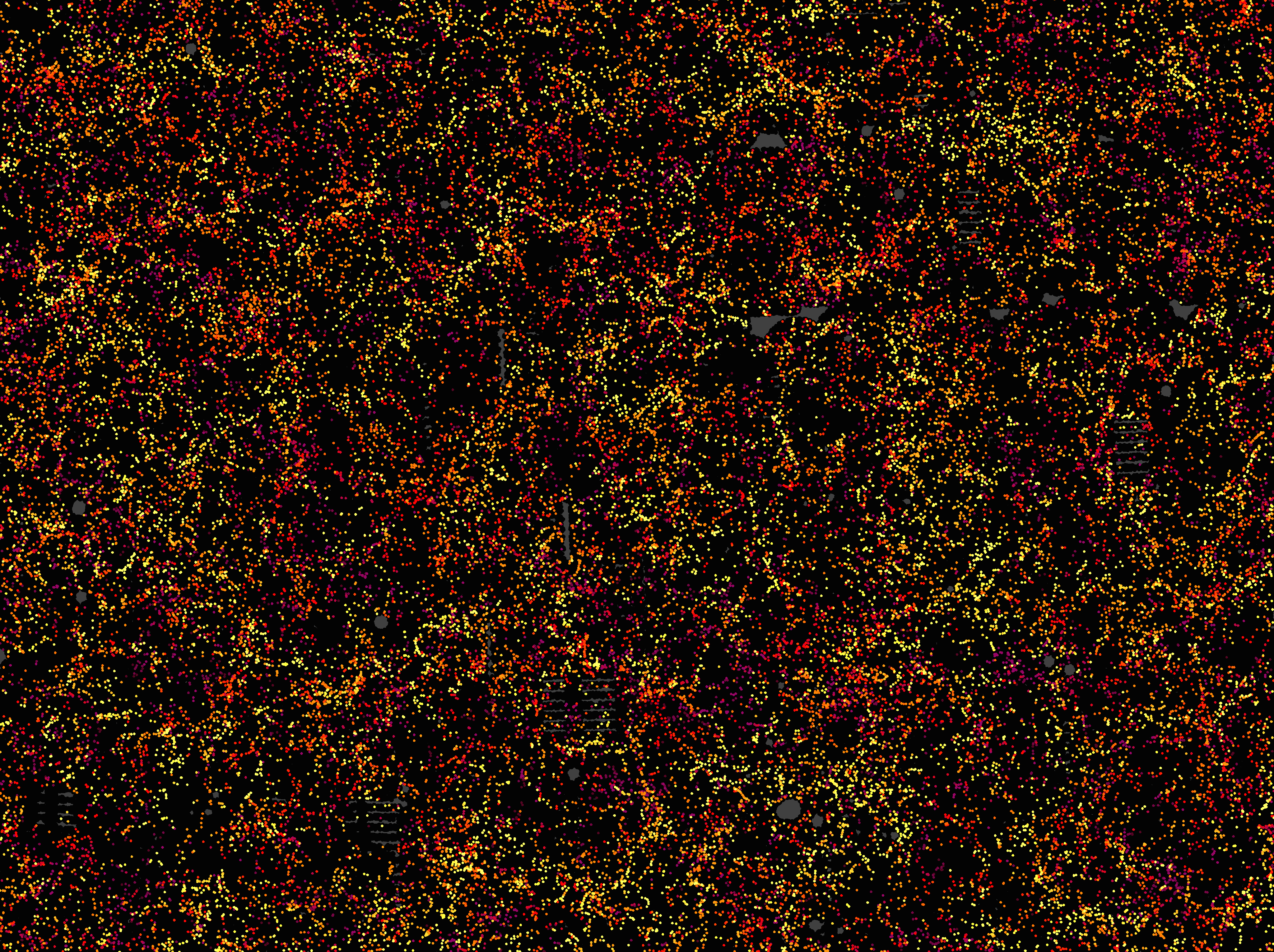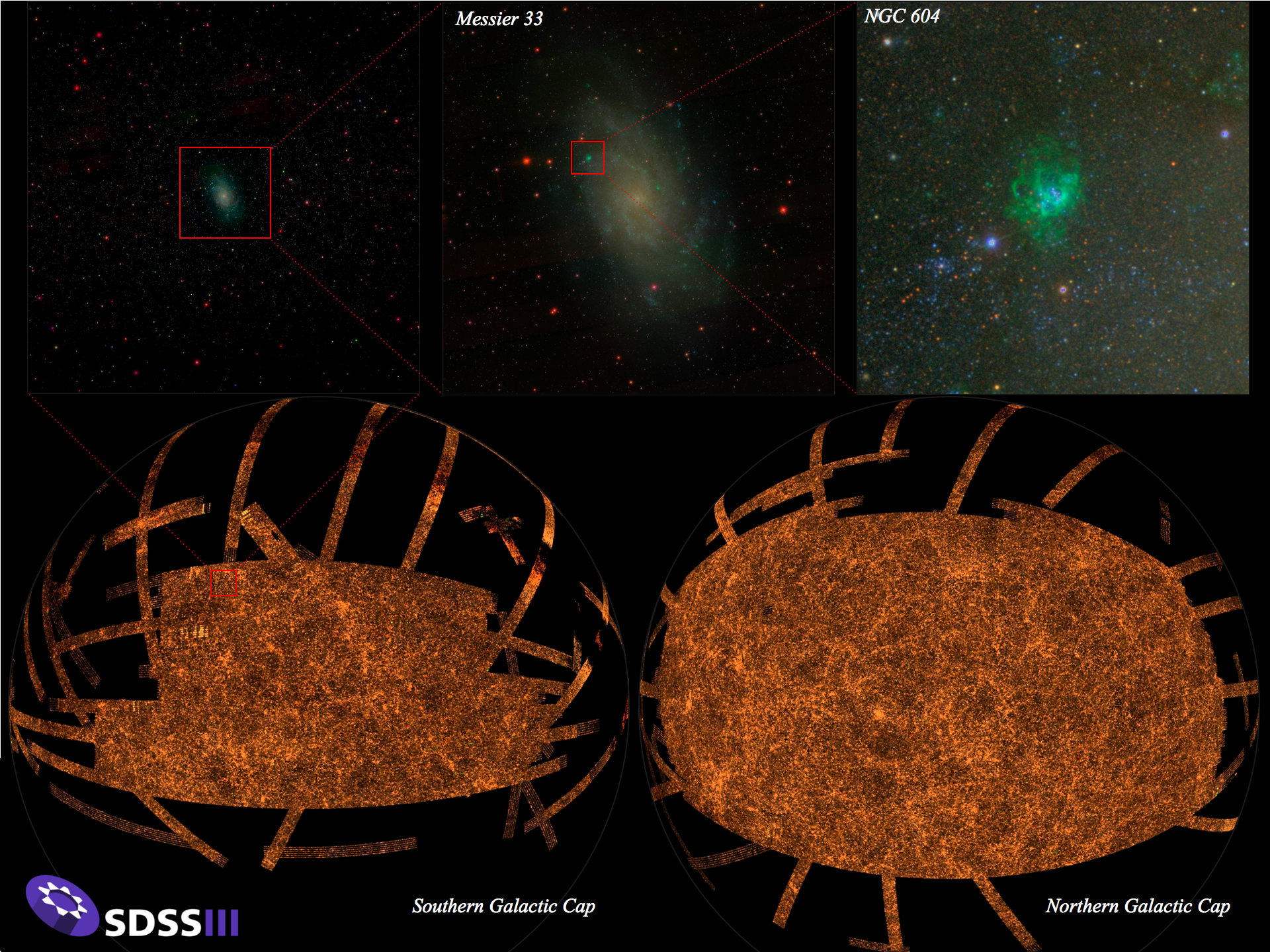The STEM inspired women’s fashion line “Shenova” has released it’s latest design – based on the final image of the SDSS-III BOSS catalogue. You can now wear this part of the SDSS!

This is one slice through the map of the large-scale structure of the Universe from the Sloan Digital Sky Survey and its Baryon Oscillation Spectroscopic Survey. Each dot in this picture indicates the position of a galaxy 6 billion years into the past. The image covers about 1/20th of the sky, a slice of the Universe 6 billion light-years wide, 4.5 billion light-years high, and 500 million light-years thick. Color indicates distance from Earth, ranging from yellow on the near side of the slice to purple on the far side. Galaxies are highly clustered, revealing superclusters and voids whose presence is seeded in the first fraction of a second after the Big Bang. This image contains 48,741 galaxies, about 3% of the full survey dataset. Grey patches are small regions without survey data. Image credit: Daniel Eisenstein and the SDSS-III collaboration
As designed, Holly Renee describes, she added a colour gradient to the image on the dress to give it “distance and sparkle”. The dress is a turtleneck sheath style, but custom orders are also possible.
Check it out here: Shenova Online Store
Also worth a look is the Shenova Gravitational Wave Dress, which by coincidence is currently modeled on their front page by SDSS member, Prof. Kelly Holley-Bockelman from Vanderbilt University (the lead scientist for the SDSS Faculty and Student Team (FAST) initiative) as she gave a recent TEDx talk on her research work: “The Spacetime Symphony of Gravitational Waves“.
(Please note that SDSS receives no funds from the sale of either of these dresses, we just think they’re awesome celebrations of science and women’s fashion).













